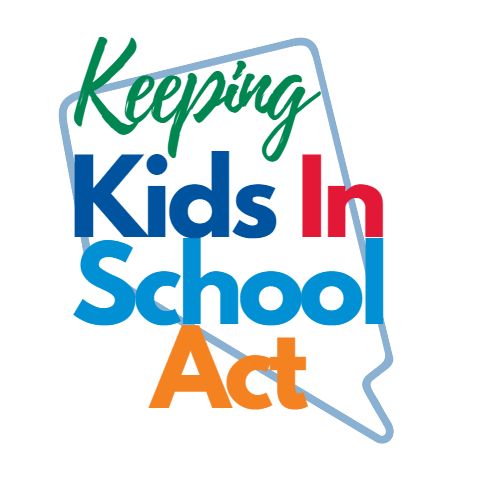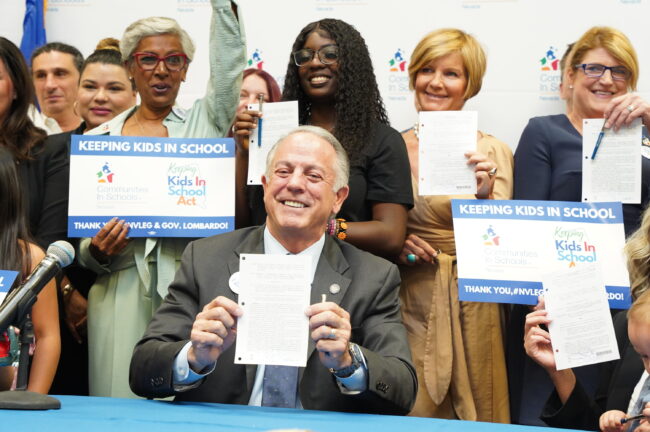Nevada Governor Joe Lombardo, Nevada State Senate Majority Leader Nicole Cannizzaro, elected officials, Clark County School District leadership, along with Communities In Schools of Nevada participated in a bill signing ceremony to mark the passage of Senate Bill (SB) 189 – the bipartisan Keeping Kids in School Act – that includes a $2 million appropriation for Communities In Schools of Nevada (CIS), the state’s leading evidence-based stay-in-school organization.
SB 189 – the Keeping Kids in School Act – was sponsored by Nevada State Senate Majority Leader Nicole Cannizzaro, along with 28 other legislative co-sponsors, to fund CIS’ evidence-based Integrated Student Supports (ISS) program over the biennium. ISS provides critical wraparound services to students struggling with attendance, behavior, academic performance, and who are more likely to be credit deficient and ultimately drop out. The bill passed unanimously out of both the Nevada State Senate and Assembly during the 82nd legislative session with broad bipartisan support. As the first state appropriation for CIS of Nevada, an organization that is funded through public-private partnerships delivering greater value to taxpayers, the bill signing represents an historic occasion for the organization and the more than 100,000 students it serves statewide.
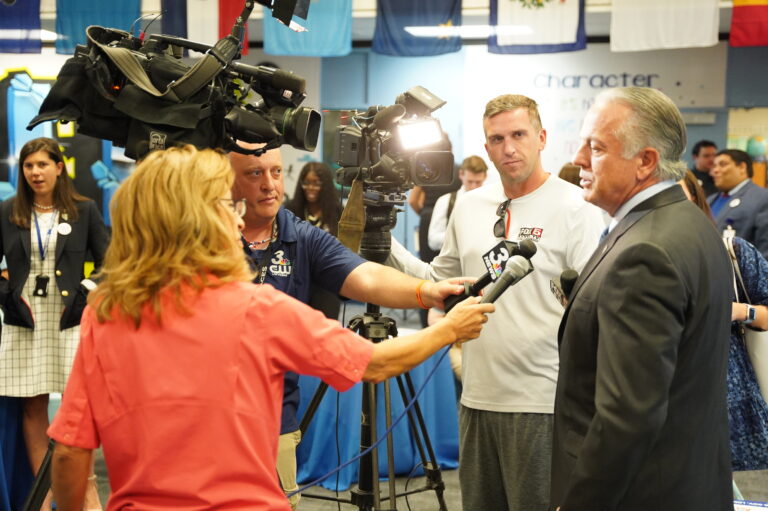
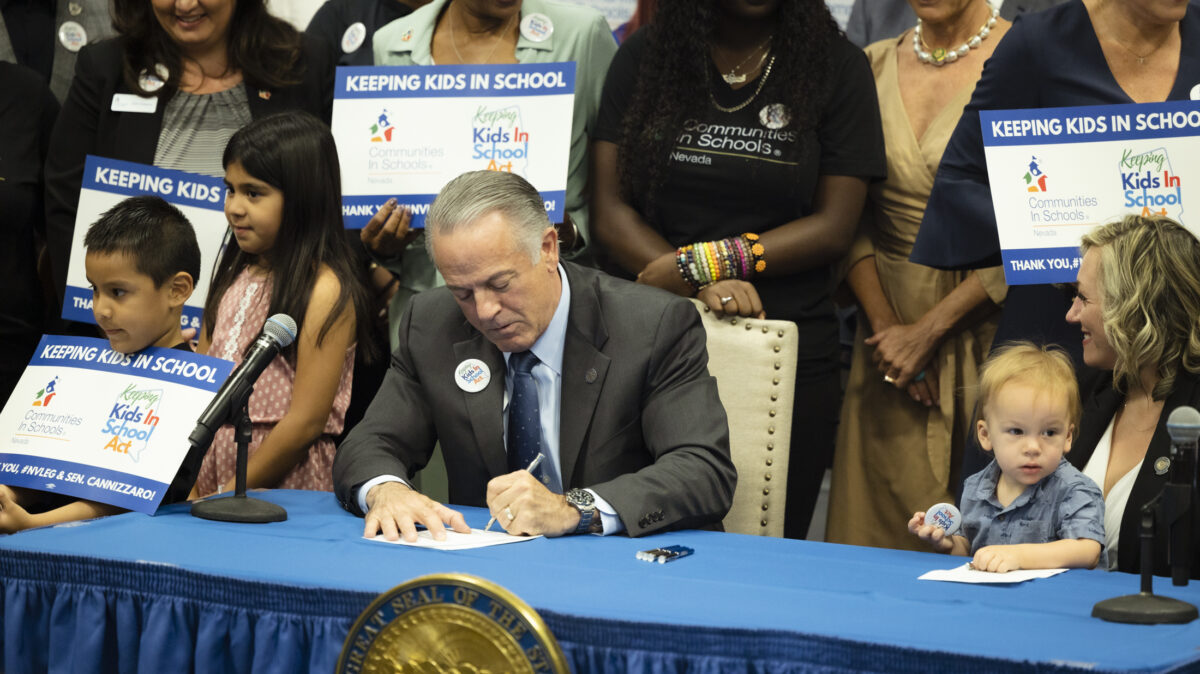
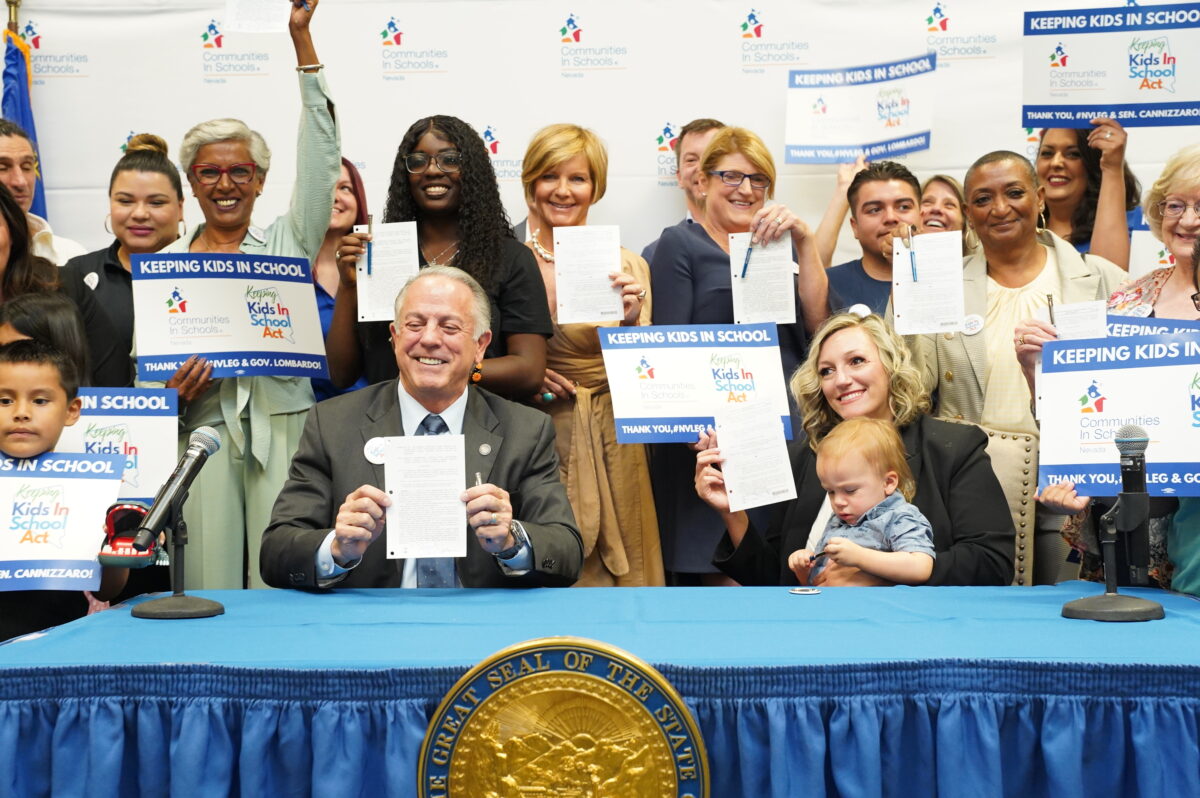
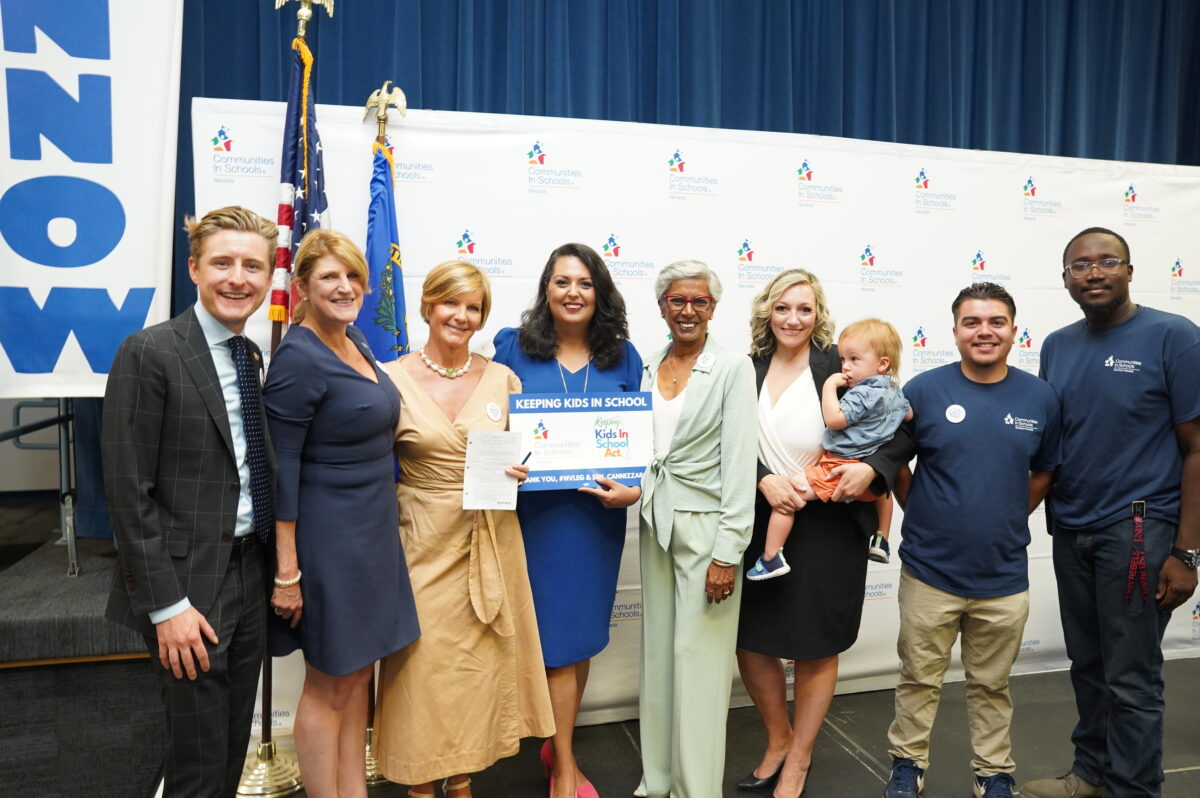
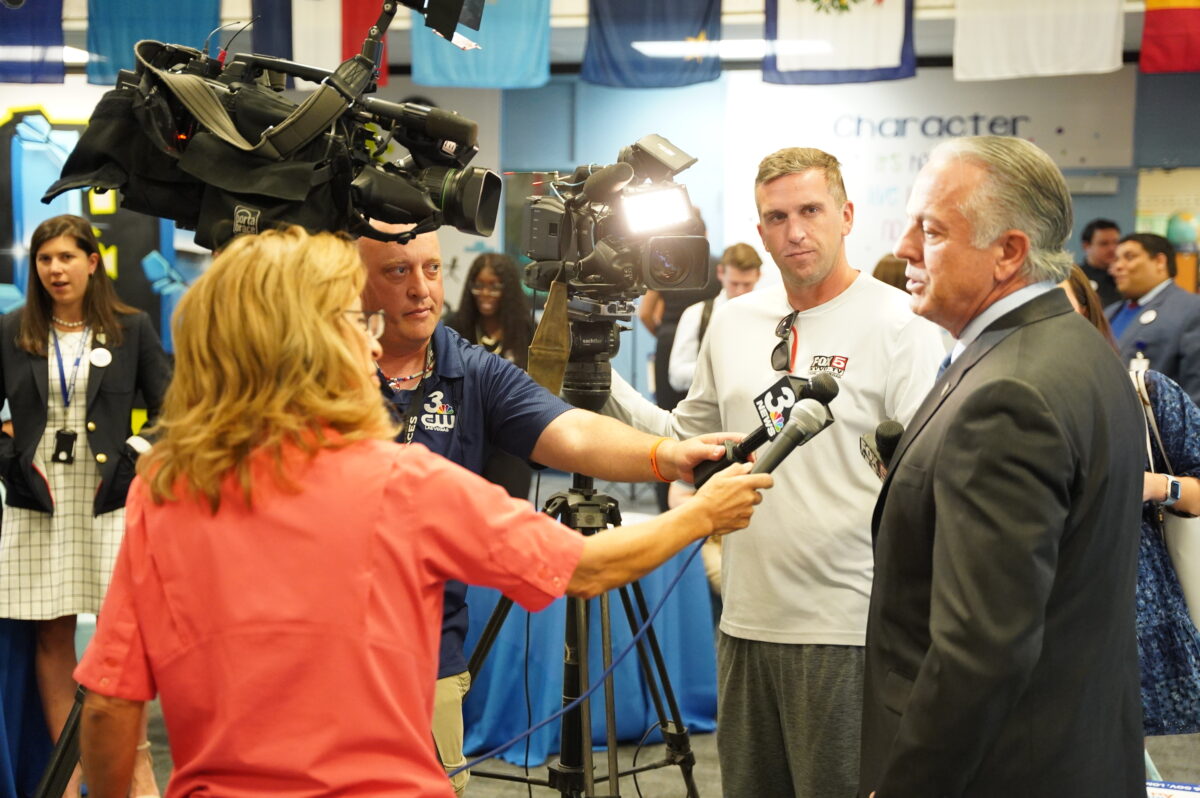
Media Coverage
- KSNV News 3 (NBC) Gov. Lombardo signs bill to fund Communities In Schools of Nevada
- KTNV Action News 13 (ABC) Governor signs Keeping Kids in Schools Act giving $2M to education program
- Las Vegas Review-Journal Communities In Schools to receive $2 million in dropout prevention
- Las Vegas Sun (photo gallery) Senate Bill 189 Ceremonial Signing
Key Facts
- The bipartisan Keeping Kids In School Act (SB 189) will provide $2 million in funding from the State of Nevada to expand Communities In Schools (CIS) of Nevada’s evidence-based programs from 92 to 108 schools.
- Nevada now joins 6 states out of the 26 who have CIS — including Texas, South Carolina, Louisiana, Tennessee, Georgia, and West Virginia — who include Communities In Schools in their state budgets.
- CIS’ statewide organization has been operating in Nevada for close to 20 years, across all grade levels, to improved student attendance, behavior and academic performance—ultimately leading to higher graduation rates.
- CIS of Nevada delivered a 94% graduation rate in the 2021-22 school year. Our students living in poverty and students of color face barriers to housing, healthcare, quality education, and other factors that affect academic success and high school completion.
- An early investment in our kids and families benefits taxpayers long-term: the CIS program demonstrates an almost 12:1 return on investment.
- Communities In Schools works across all grade levels — elementary, middle, and high school — and is focused on a strategic growth, ensuring students have a continuum of care in feeder patterns across the state.
- Our more than 100 trained full-time site coordinators across the state leverage a network of 120+ health and human services, social service, and education partners to eliminate barriers to student achievement.
- In the 2021-22 school year, our students achieved a 99% promotion rate with 70% demonstrating improved attendance, 83% with improved behavior, and 79% with improved academic performance.
- CIS’ Model of Integrated Student Supports (ISS) meets the qualifying tiers of evidence under the federal Every Student Succeeds Act and is the only evidence-based intervention for wraparound services currently approved by the Nevada Department of Education.
- Our model of Integrated Student Supports has been found to meet Tier 1 of the Every Student Succeeds Act (ESSA) evidence-base, which is the most rigorous tier, for student-level outcomes. It has also been found to meet Tiers 2 and 4 for school-level outcomes with moderate and evidence-building outcomes. Independent evaluations were conducted to verify these conclusions.
- CIS reaches 1 in 4 Title I schools in the Clark, Elko, Humboldt and Washoe County school districts serving 90,000 students in the 2022-2023 school year.
Funding received from the Keeping Kids In Schools Act will help sustain CIS’ growth, which plans to add 15 more schools to its operation beginning with the 2023-24 school year. With ongoing challenges in chronic absenteeism, increased behavior incidents on school campuses, and stalled achievement in math and reading, all exacerbated by the pandemic and the cost-of-living crisis, this investment from the Governor and Legislature is timely to meet the urgent needs facing our students.
